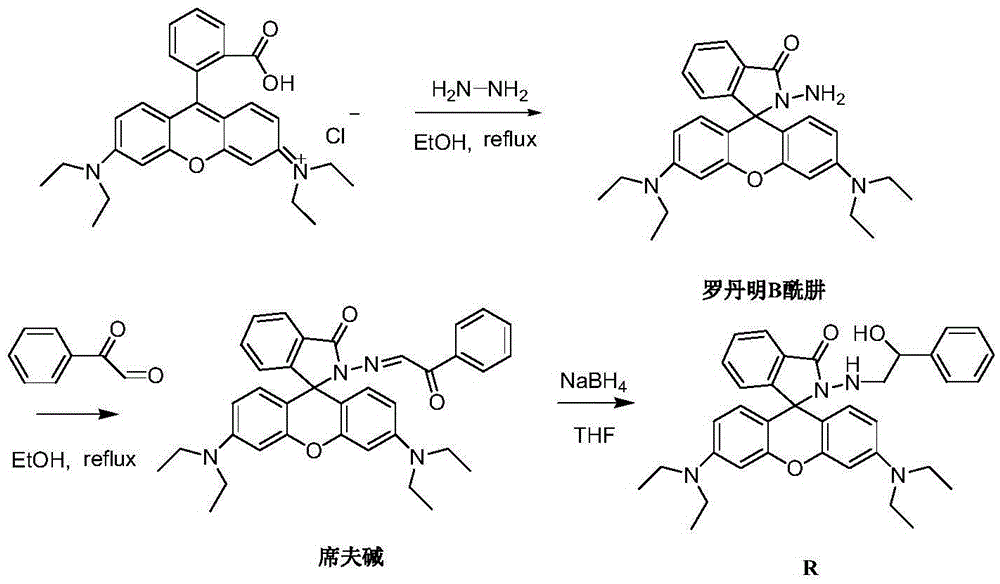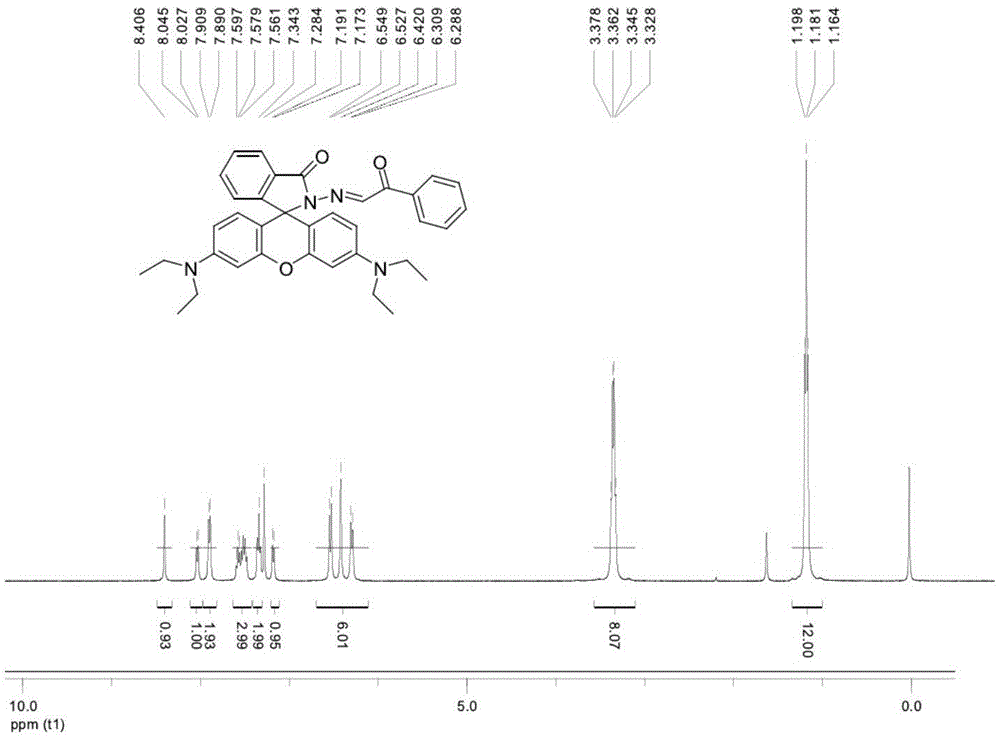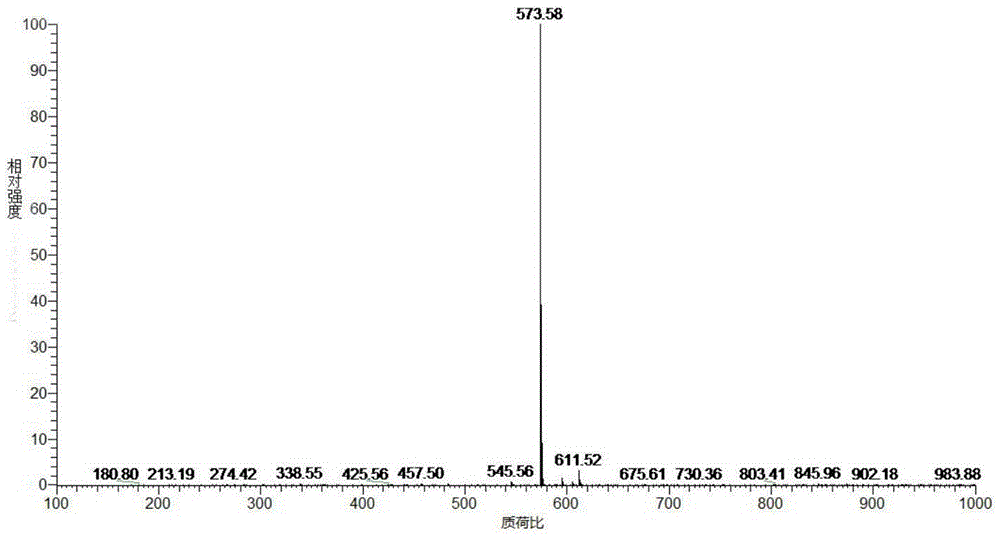Novel rhodamine fluorescent probe for detecting mercury ions, and preparation method of novel rhodamine fluorescent probe
A technology of fluorescent probes and mercury ions, applied in the direction of fluorescence/phosphorescence, chemical instruments and methods, luminescent materials, etc., can solve the problems that the structure of rhodamine fluorescent probes has not been disclosed, and achieve easy purification, high yield, and reaction short time effect
- Summary
- Abstract
- Description
- Claims
- Application Information
AI Technical Summary
Problems solved by technology
Method used
Image
Examples
Embodiment 1
[0038] The preparation of the fluorescent probe molecule rhodamine B derivative R, the specific route is shown in the following formula.
[0039]
[0040] The flow formula of the synthetic rhodamine B derivative R of the present invention
[0041] (1) Preparation of rhodamine B hydrazide
[0042] Add rhodamine B (4.79g, 0.01mol, 5mL 80% hydrazine hydrate, 30mL ethanol) into a 50mL round bottom flask, stir and reflux the mixed solution for 4-5h, add water to precipitate the solid after cooling, obtain the crude product by filtration, dry it with ethyl acetate / petroleum ether recrystallization to obtain a light pink powder solid, i.e. rhodamine B hydrazide, with a yield of 92%.
[0043] (2) Preparation of Schiff base
[0044] Add rhodamine B hydrazide (2.28g, 0.005mol), phenylglyoxal monohydrate (1.02g, 0.006mol) and 30mL of anhydrous methanol into a 25mL round bottom flask, stir and reflux for 3h, filter and dry to obtain Fu base, yield 95%. Its H NMR spectrum ( 1 HNMR...
Embodiment 2
[0048] Fluorescence Spectrum Changes of Rhodamine B Derivative R with Different Alcohol / Water Ratio
[0049] The rhodamine B derivative R prepared in Example 1 was dissolved in ethanol to prepare a 100 μM stock solution. Prepare 10 μM fluorescent probe solutions with different ratios of ethanol and water, and add 0.5 equivalent of mercury ions in sequence, the fluorescence intensity of the solution changes as follows: Figure 7 shown. from Figure 7 It can be seen that the fluorescence intensity of the solution increases gradually with the increase of the alcohol / water ratio, but when the alcohol / water ratio is greater than 6:4, the enhancement of the fluorescence intensity of the solution tends to be gentle. Therefore, the alcohol / water ratio of 6:4 is the best test condition.
Embodiment 3
[0051] Changes of Fluorescence Spectrum of Rhodamine B Derivative R at Different pH
[0052] The stock solution prepared in Example 2 was used to prepare 10 μM fluorescent probe solutions with different pHs, and the fluorescence intensity of the solutions changed as follows: Figure 8 shown. from Figure 8 It can be seen that in the range of pH<6, with the increase of acidity, the fluorescence intensity is obviously enhanced; in the range of pH6-9, the fluorescence intensity is basically constant, indicating that the probe is suitable for testing under biological environmental conditions.
PUM
 Login to View More
Login to View More Abstract
Description
Claims
Application Information
 Login to View More
Login to View More - R&D
- Intellectual Property
- Life Sciences
- Materials
- Tech Scout
- Unparalleled Data Quality
- Higher Quality Content
- 60% Fewer Hallucinations
Browse by: Latest US Patents, China's latest patents, Technical Efficacy Thesaurus, Application Domain, Technology Topic, Popular Technical Reports.
© 2025 PatSnap. All rights reserved.Legal|Privacy policy|Modern Slavery Act Transparency Statement|Sitemap|About US| Contact US: help@patsnap.com



